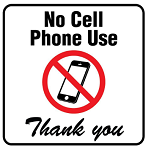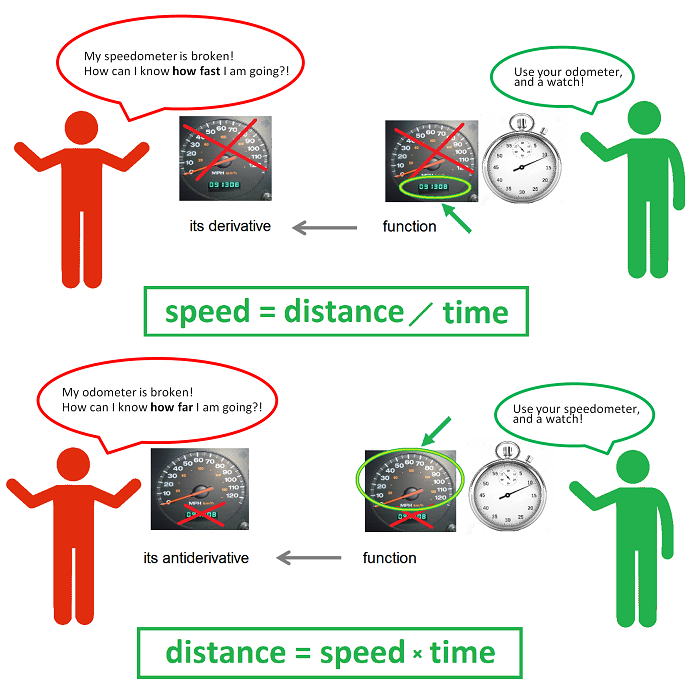This site is being phased out.
Calculus II -- Spring 2018
MTH 230 - Calculus with Analytic Geometry II. Applications of the integral, techniques of integration, and infinite series. A study of conic sections, polar coordinates, and parametric equations. (PR: MTH 229 or IST 230)
- Time and Place: 2:00 pm - 2:50 pm MTWR at 516 Smith Hall.
- Instructor: Peter Saveliev (call me Peter).
- Office: Smith Hall 713.
- Office Hours: MW 4:00, TR 3:00, or by appointment.
- Office Phone: x4639.
- E-mail: saveliev@marshall.edu.
- Class Web-Page: math01.com.
- Prerequisites: excellent algebra skills, good understanding of limits, the derivative, and the integral, fluent differentiation -- Calculus I.
- Text: Calculus by Stewart and the lecture notes.
- Outcomes: the student will learn to integrate and apply integration, use infinite series to approximate functions, become familiar with introductory multivariable calculus.
- Computer Restrictions: graphic calculator TI-83 or TI-83+.
- Activities: the student will practice each outcome via the homework given in the textbook and online.
- Evaluation: the student achievement of each outcome will be assessed via:
- in-class quizzes: taken from the textbook's exercise sets;
- online quizzes: based on the course material, provided by Webwork, http://webwork.marshall.edu/webwork2/S18-Math-230-Saveliev/;
- in-class tests: based on the textbook's exercises;
- projects: written applications of calculus in science and engineering.
- Grade Breakdown:
- participation: $5\%$,
- quizzes: $25\%$,
- project: $20\%$,
- midterm: $20\%$,
- final exam: $30\% $,
i.e., the total score is the following weighted average of the five scores: $$\text{TOTAL }= .05 \times P + .25\times Q + .20\times P + .20\times M + .30\times F.$$
For other details, see Course policy.
Contents
Lectures
They will appear here as the course progresses.
Notes:
YouTube playlist: Calculus II
Chapters:
- Sequences and their limits
- The integral
- Integration
- Applications of integral calculus
- Several variables
- Series
Calculus in one picture...
Projects
The details and the project statements are here: Calculus Illustrated -- Projects.
Instructions:
- A group should contain 3 persons.
- Your submission should in a PDF format (it will be linked here).
- It is a good idea to go digital from the beginning; for example, write with Latex or MS Word, draw with MS Paint, analyze data with MS Excel or Google spreadsheets.
- Include: the name, the title, introduction, conclusions, labeled pictures and tables, references, etc.
- The Excel file with the “free fall” equations is here for download, some explanations are here.
- Due date: one week before the last class, Thursday, April 19.
Groups and their projects:
- Group 1: Olivia Canterbury, Kyle Chapman, and Adam Stratton. 5 Complex motion: (a) How hard do I have to push a toy truck from the floor up a 30 degree incline to make it reach the top of the table at zero speed? In this project, we were asked to figure out a way to push a toy truck from the floor up a 30-degree incline to make it reach the top of the table at zero speed. We have plans to use physics equations to perform this task, as two members of our group have already taken a physics class. There are simple kinematic equations that describe velocity, distance, and angle, and we will manipulate those equations to reach our goal. We plan on making graphs to show different outcomes and testing our theories multiple times. We hope to make our application sufficient, and that our work will be accurate.
- Group 2: Chase Minnite, Haley browning, Josh Davis. 9 Optimization (d): Does it really make sense to “aim for the center of mass”? In this project, we will use calculus to find the center of mass of symmetrical and nonsymmetrical objects to determine if aiming for the center of mass would make sense. To do this, we will show three separate examples of targets and their differing centers of mass. The first object will be a circle with a radius equaling three inches. The second object will be the area under the graph of y= 6 and the parabola of y= x2. The final object will show a rectangle with a height of six inches and a length of nine inches that is denser on a certain side than the other. After finding the center of mass of each object by using the center of mass formula, we will set that point as the aiming point of the shooter. The shooter will have a probable hitting area that is circular with a three-inch radius. We will determine if it makes sense to aim for the center of mass by using optimization to find the portions of the probable hitting circle that will not hit the target.
- Group 3: R. Clay Shriver, Thomas Williams, and Corbin Lovejoy. 9 Optimization: (f) With $100$ yards of fencing material, what is the largest enclosure adjacent to a river I can build? What is the river bends? We will be using the calculus method of optimization in order to determine the dimensions of the largest enclosure made from 100 yards of fencing that is adjacent to a river. After doing so, we will do it again in a case where the river has a bend in it. We will begin by creating a general model of the situation to illustrate the general case. Then we will determine the area formula which we are trying to maximize, as well as the constraint formula for how much fencing is available to work with. Next, we will isolate the y variable in the constraint formula, and substitute into the area formula. After the substitution we will differentiate that equation, then set it to 0 and find the critical points. The critical point we find should be the maximum value for x. Finally, once we have that number we will use the first derivative test to justify it being a maximum and then plug it back into our previous equation to solve for the area.
- Group 4: Travis Blessing, Nick Ball, Gavin Adkins. 13 Pursuit: (c) You are standing in the center of an equilateral triangle with a side of $20$ meters. At two corner stand two velociraptors with a speed of $25$ meter per second and at the third a wounded one with a speed of just $10$ meters per second, while your speed is only $6$ meters per second. What do you do? In this calculus project, we have been given the project statement: You are standing in the center of an equilateral triangle with a side of 20 meters. At two corner stands two velociraptors with a speed of 25 meter per second and at the third a wounded one with a speed of just 10 meters per second, while your speed is only 6 meters per second. What do you do? We are going to analyze distance, time traveled, and angle of escape to determine life or death. We will use Excel to attempt to validate our findings.
- Group 5: Drew Adkins. 10 Dynamical aiming: (a) How would two tanks with broken turrets battle if they try to shoot at each other at all times? The project that I was assigned is part of the dynamical aiming section. The question that was posed is “How would two tanks with broken turrets battle if they try to shoot at each other at all times?” For this project, I am going to assume that the turrets cannot move on the horizontal or vertical axis. To limit the possibilities, we will also assume that the turret is positioned in a horizontal fashion parallel to the ground and that the tanks are battling in an open and flat field. If we narrow the possible orientations of the barrel of the turret relative to the front or rear of the tank to 0° (facing forwards or backwards), 45° (diagonally over the tack and directly over the corner), and 90° (straight off one of the sides), this would give a total of six possible battle scenarios since the tanks are interchangeable: Tank 1: 0°, Tank 2: 0° | Tank 1: 45°, Tank 2: 0° | Tank 1: 90°, Tank 2: 0° | Tank 1: 45°, Tank 2: 45° | Tank 1: 90°, Tank 2: 45° | Tank 1: 90°, Tank 2: 90°. To show how these different scenarios would play out, I will make use of Excel to plot the most logical courses the respective tanks would need to take during the battle to remain aimed at each other despite their inability to reposition the turret.
- Group 6: Casey Walizer. 10 Dynamical aiming: In my project I must show how two tanks would battle if one has broken tracks and the other has a broken turret while firing at each other the whole time. It is best to have the tank with the broken turret to have only 2 angles of 90, 0, and 45. To show different positions of the tank going around the broken track tank. While having the other tank being able to be stationary but full range of the turret that isn’t broken. With the use of Euler’s Method for the angles that are between 0-45 and 45-90. It shows the tanks movements to remain able to shoot at the other tank as it revolves around it. The tanks will have to have their turrets pointed at each other always and we can do this with the broken turret tank revolving around the tank with broken tracks. For each of the angles it is different. The 90-degree angle, can be solved with the tank revolving around the broken track tank in a circle. 0-degree angle, is with the tank only being able to hit the tank forwards or behind the tank.
- Group 7: Branden Roberts. 10 Dynamical aiming: Our goal is to find the optimal paths for two tanks with broken turrets so that they can always shoot at each other. I propose that we use specific kinds of tanks and accurate statistics of those tanks to find the most optimal way for the two tanks to stay in each other’s sights. My thoughts were to use World War 2 era Sherman and Panzer series tanks, my reason for this is that the tanks are very different from one another which will make pathing and targeting quite interesting.
Tutoring
The math tutoring lab will be open this semester, starting the second week of classes, in Smith Hall 625. The hours are 10-4 and 5-6:30 MTWR and 10-noon Friday. Follow the link to the information page.
As usual, they offer free drop-in tutoring for math and statistics classes through Calc 3.
The lab will open on the second week of classes and running through the end of the semester. The lab is not open during finals week.
Also, the university tutoring center is in Smith Communications on the second floor.
Exams
Upcoming:
- Calculus II -- Spring 2018 -- midterm, Thursday March 8
- Calculus II -- Spring 2018 -- final exam, Thursday May 3, 12:45 - 2:45 pm
Old exams (to be used for testing not studying):

